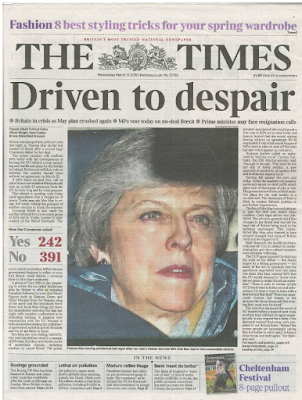Key assessment to is coming up for first years! It's a mock exam sat in the first week back after the holiday (Merry Xmas!!!!). It will focus on the analysis of newspapers. Though you won't know this for the final exam, for this mock you will be writing about the set editions of The Times and The Mirror. This is a different format to the final exam, where you will likely have to compare one of the set texts to a different newspaper, but this time, we'll go easy on you.
So you've got to learn this one inside out! We've already ripped apart The Mirror, so now you've got to do the same for this one. It's going to be great!
1 - Save this. Use the 'insert image' tool to place it in to a new post.
2 - Copy paste the following in to your post
Text provided by the exam board. Cheers EDUQAS!The Times newspaper is a British national ‘quality’ newspaper first published in 1785. The Times has been published by Times Newspapers since 1981, a subsidiary of News UK, wholly owned by News Corp, Rupert Murdoch’s company.This edition was published on March 13th, 2019, after Theresa May had encountered another Commons defeat over her Brexit proposals.The Times is famous for having a range of journalists with varied political viewpoints which allows the newspaper to offer a more neutral political stance on Brexit negotiations
3 - Who the hell is Rupert Murdoch?
Five minutes! No more or less! Who is he? Why's he important? Why do some people hate him? Copypaste some information in to your blog.
4 - What the hell is Brexit? - SKIP THIS ONE
No really. Ten minutes. Why is it so important? Copypaste some (more) information in to your blog.
5 - In depth analysis
Analyse this Times front page with your new found contextual knowledge. Make brief notes under each of the following headings. Don't worry if you repeat yourself. A bit.
Point of view and ideology
Layout and design
Composition – positioning of headlines, images, columns, combination of stories
Images/photographs - camera shot type, angle, focus
Font size, type of font (e.g. serif/sans serif)
Mise-en-scène – colour, lighting, location, costume/dress, hair/make-up
Graphics, logos
Lexis
Copy
Anchorage (images)
Anchorage (captions)
Narrative
Target audience and audience positioning
Proairetic codes
Hermeneutic codes
Symbolic codes
Referential codes/intertextuality
